The 489th Bombardment Squadron on Corsica

Insignias above (left to right): 489th BS Insignia from B-25 at MAAM, 340th BG Insignia from Q. Kaiser's A2 flight jacket (1944), NASA space shuttle photo of Corsica, 12th Air Force patch, U.S. Army Air Corps Patch
Original Photographs and History of the 489th Bomb Squadron
by B-25 Radio-Gunner Quentin C. Kaiser,
Alesan Air Field, Corsica, France, 1944-1945.
Contents
- Intro
- The larger picture
- Groups on Corsica
- Aircraft of the 489th
- Combat Mission Briefings
- Quentin Kaiser's Flight Log
- Quentin Kaiser's "WWII Stuff."
- The 489th Bomb Squadron Book
- The 489th Squadron Tactical Diary
- Eruption of Mount Vesuvius
- Monuments and Memorials
- Crash Landing of "Angel of Mercy"
- Miscellaneous Stuff
- Corsican Scenery
- The Lucky Little Bell of San Michele
- Page 2
- Page 3
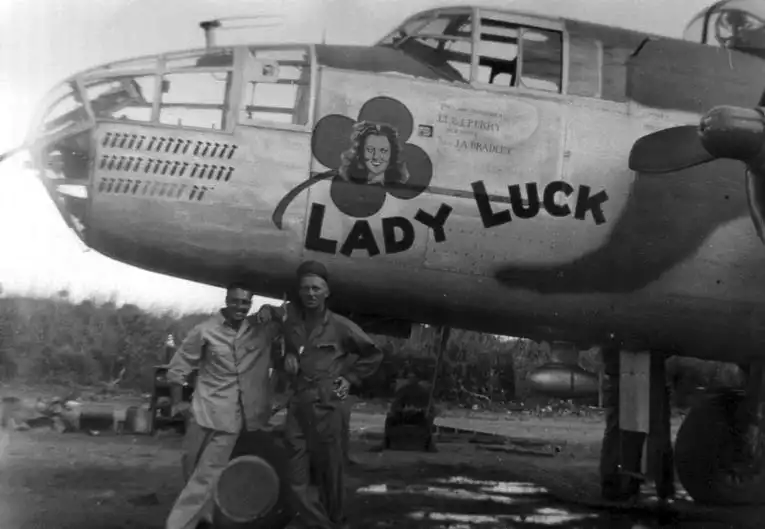
The photo above shows a North American B-25J Mitchell medium bomber from the 489th named Lady Luck. My father, technical sergeant, radio-operator, and waist-gunner Quentin Kaiser is standing on the left and staff sergeant, top-turret gunner, and engineer Bill Devine is on the right. Lady Luck had a large 9Y painted on its tail fin. The "9" designated the 489th squadron and the "Y" designated the aircraft.
The 489th was one of four squadrons in the 340th Bombardment Group. The other squadrons were the 486th, 487th, and 488th. These squadrons had planes with tail fins marked "6", "7", or "8", respectively, followed by a letter identifying the particular aircraft. The crew chiefs and their ground crews who serviced, repaired, and maintained the aircraft typically adorned their planes with artwork, names, and other personal touches. Each bomb painted on the fuselage represents one combat mission, so Lady Luck had participated in at least 42 missions when the above picture was taken. Five of Quentin Kaiser's 65 combat missions were flown in Lady Luck - 9Y.
Although the pilots and crews had their own main aircraft, they usually flew missions with different planes and
crews depending on availability and mission requirements. At the time of my dad's photo above, Lady Luck was
assigned to pilot Lieutenant E. J. Perry and crew chief J. A. Bradley. Airfix sells a
plastic model of this aircraft.
"As I reported to you, my plane picked up 30 holes on December 10, 1944 (mission #47).
I may not have told you but it was 9Y I flew in that day. The target is listed as Ossenigo in the
Brenner Pass. The mission report is not too readable and it does not show which aircraft
were used. The squadron records (flight schedules) show each box sent out with the aircraft and crew listed
in their positions in the box. I imagine that every B-25 on
Corsica was out that day hitting the Brenner Pass."
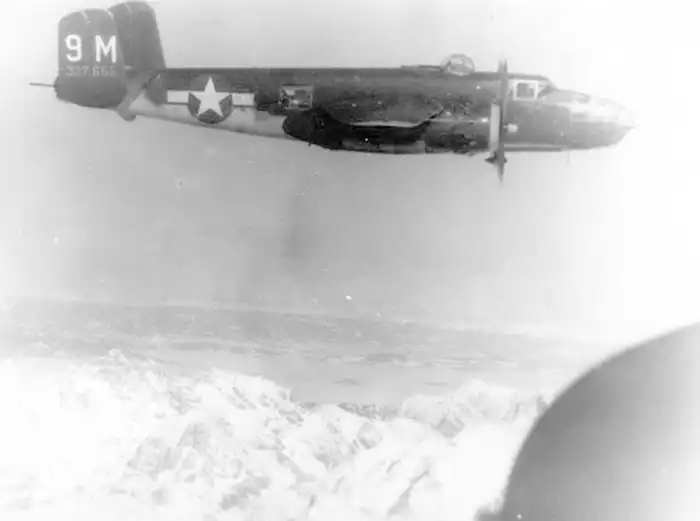
The photo above shows B-25J 9M (serial# 43-27655) on a mission over the Brenner Pass.
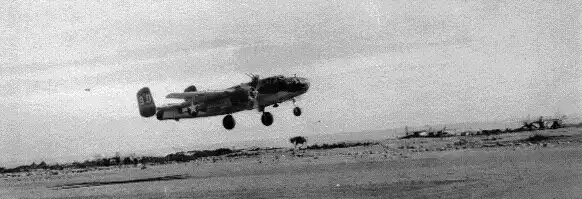
Above is B-25J 9D (serial# 43-27638), Briefing Time, taking-off from Alesan Air Field on Corsica in 1944 for one of its 126 missions. Quentin Kaiser flew two of his 65 missions in Briefing Time. The Mid Atlantic Air Museum in Reading, Pennsylvania, acquired a B-25J (serial# 44-29939) that was used in the movie Catch-22 and restored it to look like the original Briefing Time.
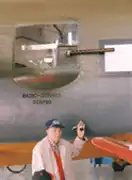
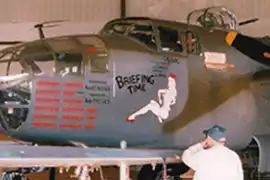
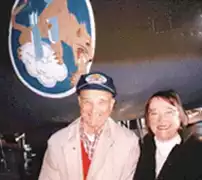
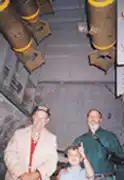
The above photos of Briefing Time were taken at the Mid Atlantic Air Museum in 2000. In the picture on the left, my dad is obviously explaining how not to shoot off the wing of the aircraft while firing a 50 caliber machine gun from the waist-gunner's position. The radio-gunner had two 50 caliber guns, one on each side of the fuselage. I wonder what he's looking at so intently in the second picture. A nice reproduction of the 489th Bombardment Squadron insignia can be seen behind my father and sister. My brother and his son are standing with my dad under the bomb bay in the picture on the right. A B-25J could carry up to six 500 or 1000 pound bombs but when the squadron bombed distant targets like Borovnica, Yugoslavia extra fuel tanks took up space in the bomb bay, reducing the bomb load.
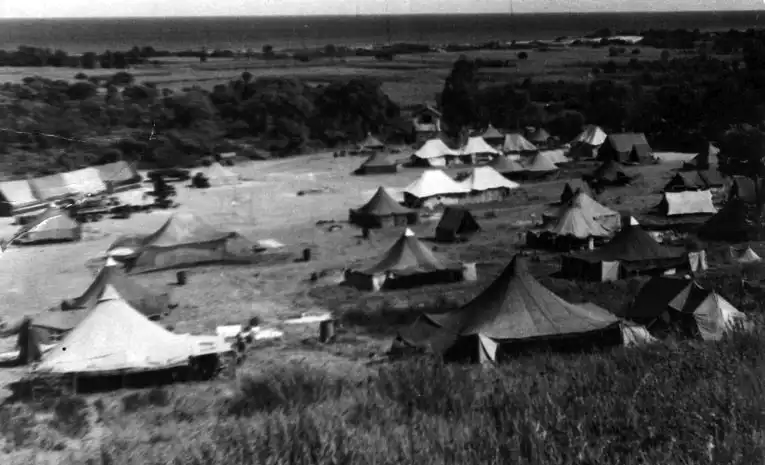
"The photo above shows the prime 489th area with the mess area at the bottom of the hill and the administrative area off to the right. Most of the enlisted men bunked here. The officers' area was out of the picture to the right and the Tyrrhenian Sea is in the background. If we could see the island of Elba (it was actually the island of Monte Cristo) when we awoke, odds were good that the weather would be excellent for flying that day." Napolean who was born on Corsica and exiled on Elba supposedly said, "Able was I ere I saw Elba." Try spelling that backwards.
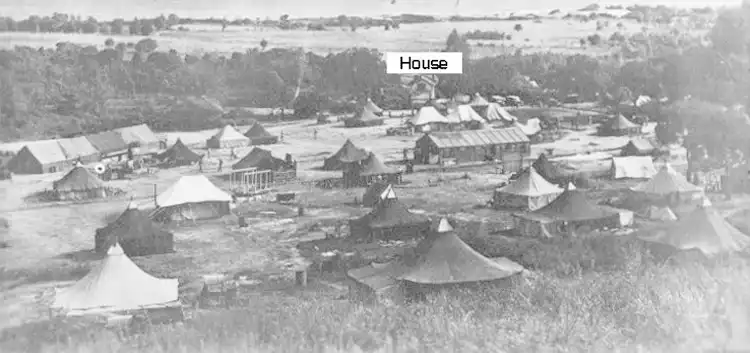
Remarkably, native Corsican Dominique Taddei sent me the above photo taken from a similar perspective as my father's photo. Dominique said the house was the local station for the railroad which wasn't used because the Germans destroyed the railroad bridges before they fled the island. A woman named Rose lived in the old station house with her sons Ange and Guy. The large white tent in the left foreground is where my father bunked with Bill Devine, George Carter, and Joe Naughton.

Tent mates from left to right, Quentin Kaiser from St. Albans, NY; George Carter from McDonald, PA; Bill Devine from Los Angeles, CA; and Joe Naughton from Chicago, IL.


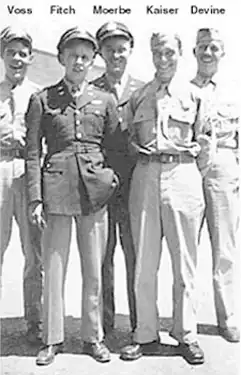
Left photo: Adopted stray dog that my dad named CANADAK, and made a collar for. The
name was derived from the names of the four tent mates: CArter, NAughton,
Devine And Kaiser. “The real significance of this picture is
that behind the dog, is the one-tube radio receiver I made
so we could listen to the BBC in the evening.
We used to listen to Axis Sally too but I'm not sure if that was with this receiver.”
Middle photo: "This picture was taken on December 25, 1944 when I came back from Christmas dinner.
Holiday dinners were very good in the Army and you had to develop the dexterity needed to balance a
fully loaded mess kit."
Right photo: The transatlantic crew of B-25J 9F Stella.
"I don't remember where it was taken but it may have been in north Africa on the way over
since we are all dressed up. I guess it was taken by George Carter our tail-gunner. We had several copilots.
Fred Voss from Grand Rapids, Michigan was a real hot pilot and on a training mission on Corsica he flew his
B-25 under some high-tension lines up in the mountains but he did not get low enough and he caused a
blackout. I don't remember what they did to him. Our pilot, George Fitch from Bushville, New York, was killed in a
training mission after he returned to the States. He used to invite me over to his tent to play
chess and one day he had a visitor who chastised him for fraternizing with an enlisted
man after I left. The Air Force was different I guess. Norman Moerbe from Port Arthur, Texas was our
bombardier-navigator. He was very fond of saying, 'This is it!' whenever we saw any
evidence of the war as we flew over to Europe via Ascension Island on the
southern route. We all knew what he meant when we got out after landing at Alesan on May 16, 1944 just three days after the
big raid. That was the ultimate 'This is it!' with all the wreckage spread out before us. Moerbe was the old man of the crew."
Here's what Bob Silliman had to say about the German air raid on Alesan: “I served in the 380th Bomb Sqdn., 310th Bomb Group, also part of the 57th Bomb Wing, and was stationed at Ghisonaccia, Corsica, a few miles south of Alesan. I was an armorer in the 380th and I'll never forget the night the Germans bombed the 340th up at Alesan. We were out on our airfield and could vividly see the German Chandelier flares that they dropped over Alesan and we were sure that our field would be their next target. Fortunately for us, this never happened.”
Dana Craig from the 486th Squadron of the 340th Bombardment Group was at Alesan during the attack. He had this to say: “Fortunately the 486th bivouac area was about 1/2 mile north of the air strip. On the night of the German raid I was awakened by the blast of the 90mm anti-aircraft battery on the next ridge between us and the airfield. In the days prior to the raid, being a latent coward, I had dug a slit trench to hide in, just in case. It didn't come as much of a surprise that we four tent mates wound up in the same trench, protected, up to our knees. From that vantage point, we watched the explosions at the air field and the fuel dump. At times we could actually see the German aircraft in the glow of the fires. The one string of anti-personnel bombs aimed at us just missed our ridge and exploded, like a bunch of fireflys, in the valley next to our position. An important note is that after losing all of our aircraft at Vesuvius in March, we were temporarily equipped with the cast-offs of other B-25 units. But when we arrived on Corsica we received new, bright and shiny "J's".
Because we had 'air superiority,' these new craft were not weighted down with camouflage paint. Needless to say, in the glare of the first flare dropped by the German 'pathfinder' these beautiful aircraft shone like mirrors. The next day, we had just enough aircraft to field a token raid on a couple of mainland airfields. By that time the German aircraft had gone to safer locations.”
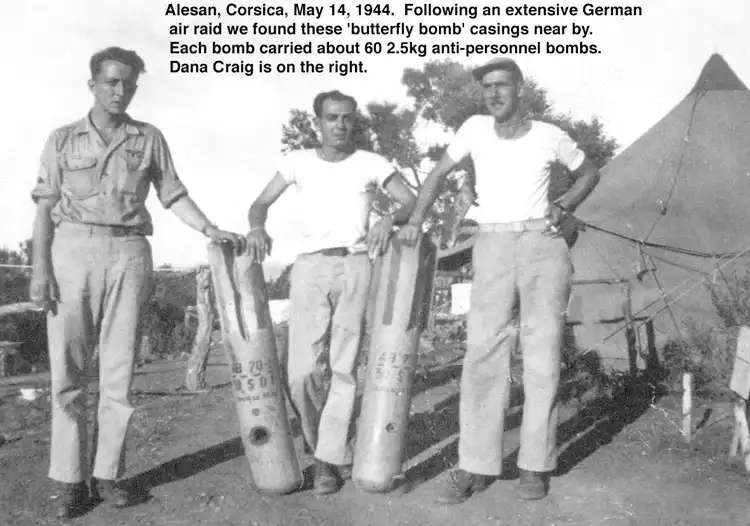
Dana Craig from the 486th Bombardment Squadron sent me this great picture with the German "butterfly bombs" they found after the May 13, 1944 attack on Alesan Air Field. The explanation in the caption is from Dana Craig.
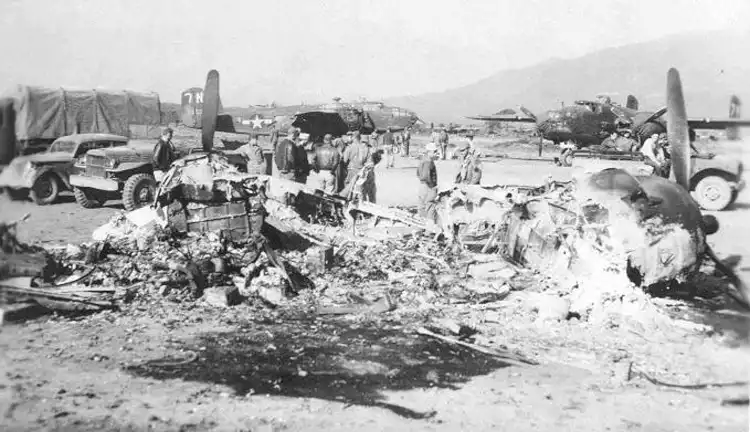
Damage that occurred to the 340th Bombardment Group's B-25s by the German air raid on May 13th, 1944. These planes are from the 487th Bombardment Squadron. (Photograph from Dominique Taddei). See more photos of Alesan Air Field on May 13, 1944. Just before attacking the 340th Bombardment Group's base at Alesan, the Germans attacked the Spitfire base at Poretta, Corsica about 15 miles to the north. Alexandre Durastanti contributed photos of Poretta Air Field on May 12, 1944.
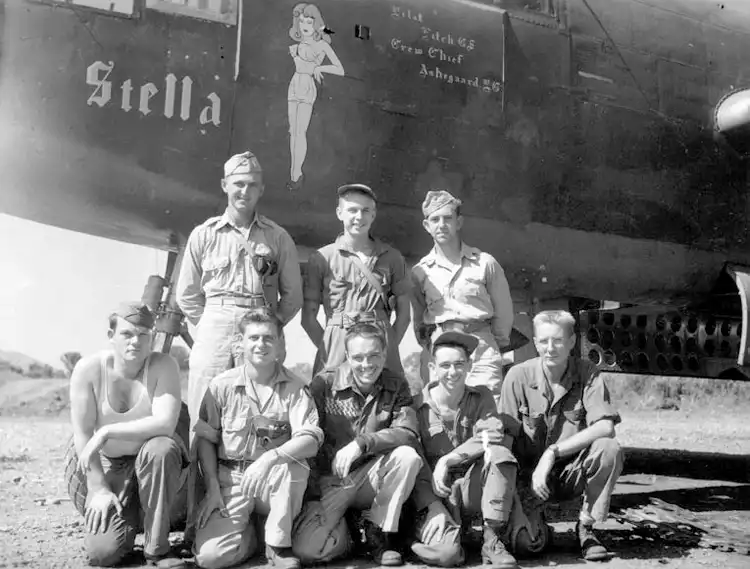
This is the crew of my dad's main aircraft- B-25J 9F Stella. From the left in the front row: Frank Zensen (ground crew) from Newark, New Jersey, Paul Eller from Rural Retreat, Virginia (top turret-gunner/engineer), Quentin Kaiser from St. Albans, New York (radio-operator/waist-gunner), George Carter from McDonald, Pennsylvania (tail gunner), and Ralph Leverenz from Norwood, Ohio (ground crew shief). Standing from left to right in the back row: Norman Moerbe from Port Arthur, Texas (bombardier/navigator), George Fitch from Bushville, New York (pilot) and Walter Riddle from Durant, Oklahoma (co-pilot). Ralph Zensen named the aircraft and painted the nose art for Stella, his wife. This is the same picture of my dad's 9F "FOX" crew< that appears in The 489th Bomb Squadron Book.

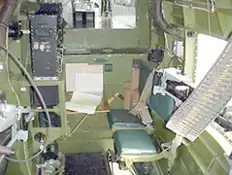
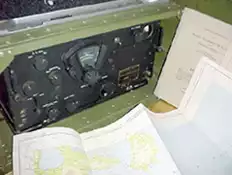
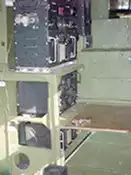
The above photos show what the radio-operator/waist-gunner's position in a B-25J looked like. I was on the B-17 at the Palm Springs Air Museum and it appeared to me that the B-17 had the same radio equipment as the B-25s my dad flew in. As you say, Don, the B-17 and B-25 used the same equipment. In fact, I had one of those flexible lamps by my bed in the tent in Corsica. I was able to read at night without disturbing my tent mates. The receiver is a BC348 and I have one in the basement. It was a gift from my brother Bill (William K. Kaiser), one of the founders and the first curator of the Long Island Cradle of Aviation Museum. My brother Bill was a pilot in United States Navy Blimp Squadron ZP-14. While stationed at Cuers, France during the Fall of 1944, he flew down to visit me on Corsica but I was on a mission that day, so we never met up again until after the war. I have used his BC348 on the air.
On my early missions I would tune in the BBC and we would listen to music and the news from London while on our way to drop bombs. Later we were ordered not to listen and we were told the enemy was tracking spurious signals from these receivers. I never believed this and thought they wanted us to be more alert for enemy fighters. After all, all the Germans had to do was to look up and they could see us coming. The two pictures of the waist gunner's position in your messages, Don, were like old-home week. My transmitter is the large black box on the left and my receiver was beneath that but you cannot see it in the picture. The fifty-caliber gun is the one on the right side of the aircraft and is the one where I experienced buck fever as I explained to you in front of the ME-109 at the Wright-Patterson AFB Museum. I was referring to one of my mid-July (1944) missions to the heavily-defended area around Ferrara, Italy. My mission notes for the July 14 mission to Carbola, Italy in B-25J 9X Queen Mary, say: 'first fighters - fuel dump.' Not shown in the photo above is the 50 caliber ammunition cannister which hangs on the side of the aircraft aft of the gun position. It was the most frightening of my experiences when flak hit the ammunition and the aircraft filled with smoke. I still have some of the burst 50-caliber shells from that incident. I had pulled the red handle on my flak suit, taken off my flak helmet, and was standing by the hatch with my hand on the red handle that made the hatch drop away when I realized the airplane was still flying. Gradually the smoke cleared off and I reconnected my headset and throat microphone - the falling flak suit had separated them. I connected the headset first and I heard the pilot droning 'pilot to radioman' over and over before I could connect the mike. Later I heard that the pilot had called the tail-gunner when the smoke burst forth and the tail-gunner responded but he said he was not about to crawl through the smoke to see what had transpired. Later I reamed him out because he could have given first-aid if needed. I really could not blame him, however. All this occurred on July 15, 1944. I think this is the only time I flew two missions in one day. My mission notes say 'hit alternate' for the morning mission in B-25J 9J Miss Rebel, to Ferrara, Italy. After the morning mission, they told us to eat lunch and go after Ferrara again. My notes for the afternoon mission also in 9J, say: 'Hit in neck - over 50 holes. Hit northern approach to R.R. bridge.' This was the day Moerbe (bombardier Norman Moerbe) got his Purple Heart. I sustained a scratch across my forehead from the exploding ammo but it was a relatively minor injury.
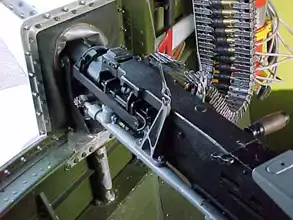
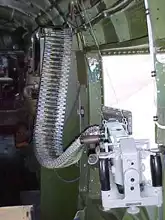

The two photos on the left show the 50-caliber machine guns on both sides of the radio-operator/waist-gunner's position in the a B-25J Mitchell medium bomber. The photo on the right shows some of the extra 150-gallon fuel tanks placed in the bomb bays on distant missions to targets Borovnica, Yugoslavia.
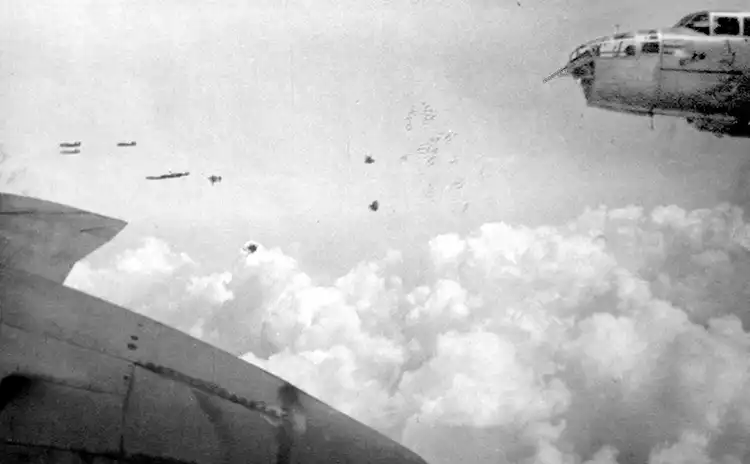
"The picture showing four flak bursts in the center and two on the lower right is one I took on a mission and I don't know where or when. The time between taking and developing pictures was so long that I have no idea as to flak and mission. I am not sure but I think the Germans set up their flak guns in batteries of four and aimed them with radar. The batteries were fired in salvo, that is, simultaneously, and used mechanical time fuzes. The four bursts shown in the center of the picture show how close the rounds burst. The two bursts on the right are from the prior or later salvo. I would say we probably got some holes that day. I remember two chaff missions. The Germans used radar to aim their flak guns and we looked at a chaff mission as a milk run because they aimed at the bombing aircraft.
Chaff is like Christmas tree tinsel which acts as a reflector to the radar thereby hiding the real aircraft. The coldest I have ever been was tossing out chaff by hand at -40 F. About the scaredest I have ever been was flying top-turret on another chaff mission where the Germans got wise and aimed at the chaff ships. To my surprise my flight record does not show which were chaff missions. On Dec. 10, 1944 (mission #47) I flew apparently a regular 489th mission to Ossenigo in the Brenner pass where we encountered flak and fighters. My plane received 30 holes! You can just imagine the German gunners at Avignon loading their 88s and seeing the black puffs get closer as they tune their radars and finally seeing pieces of B-25 come down. They must have jumped out of their shoes and gone out that night and guzzled French eau de vie. But, of course six guys didn't come home that night. We did see some guys who did make it back with the help of the French underground- the Maquis- named after the Corsican undergrowth. They were in local clothes and we could not question them because they did not want the Germans to find out who had helped them."
'My fifth mission was in B-25J 9Z, Comin Over Hun on June 10th, 1944. The target was Bucine, Italy. My note says "all boxes hit" but I don't know if that means each box of six aircraft hit its target or if each box of six aircraft was hit by flak. The note also says I missed seeing flak.
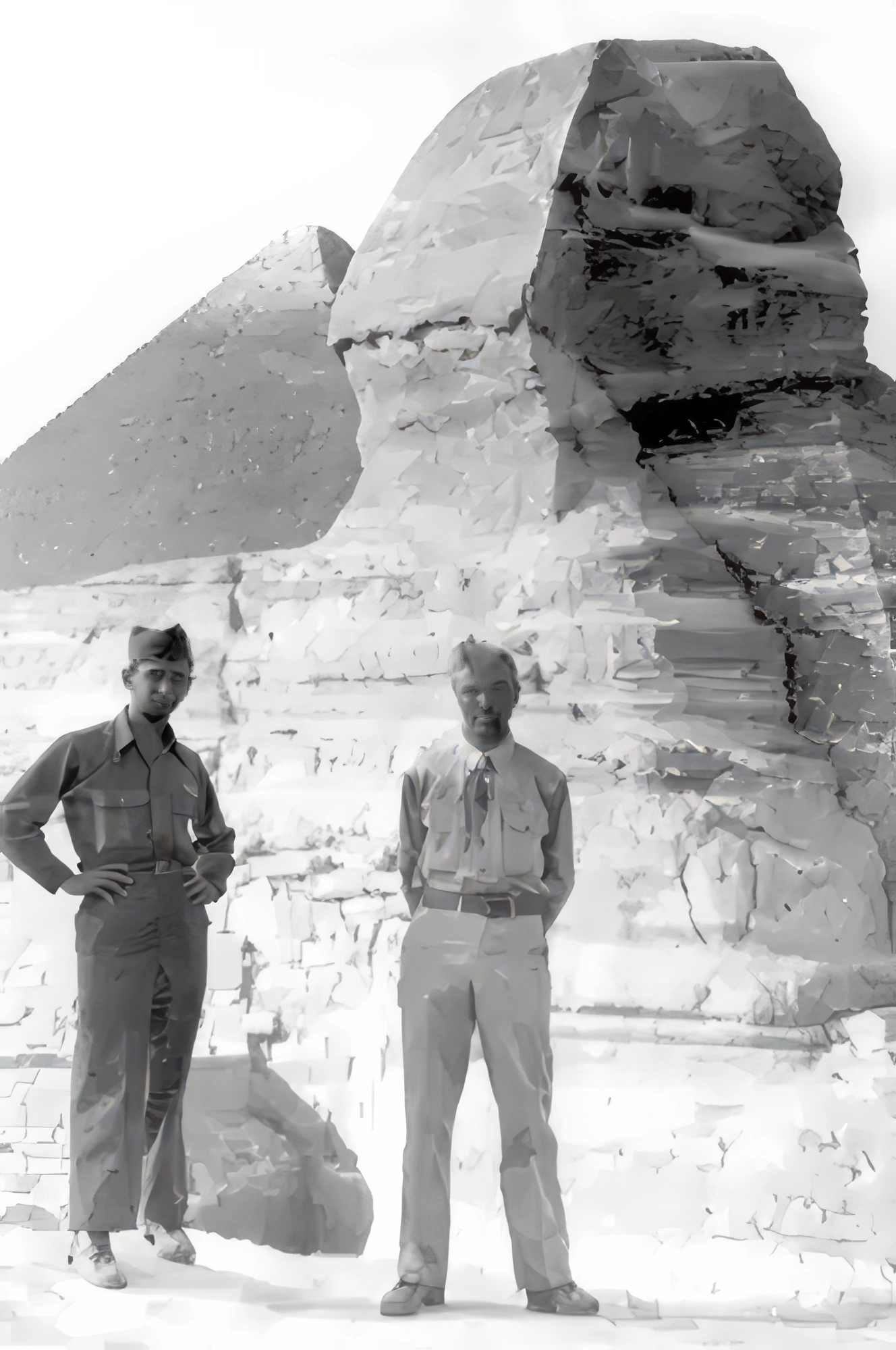
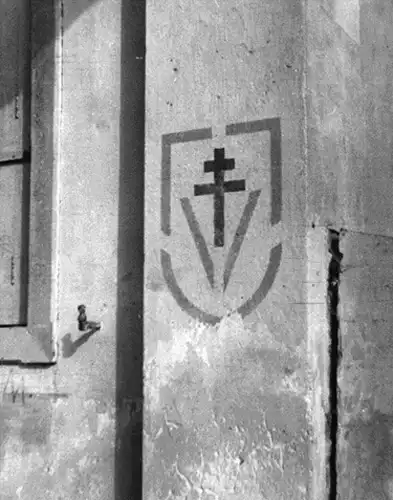
Left photo:: "On October 22, 1944 I flew into Cairo, Egypt flying in a B-25C with 638 as the last three numbers of its serial number and with tail marking of "99". This was one of our war-weary aircraft used to take people on rests and to gather produce from Africa. The picture shows Carter and me in front of the Sphinx just outside of Cairo. Egypt was like being home 'cause it was a neutral country. Alexandria and Cairo are big cities with buses and stores and that made the war seem far away. Rome was very similar because the Germans just left it without blowing things up but the thing I remember about Rome was that it was much cleaner than New York City whereas Naples was a lot dirtier."
Right photo: “On September 30, 1944 Devine and I flew to Lyon, France in a B-25C with tail marking "98". I did not record its serial number. We were transporting some general's staff people. Lyon had just been liberated and the "Free French" guerillas were active and displayed this Cross of Lorraine.%rdquo;
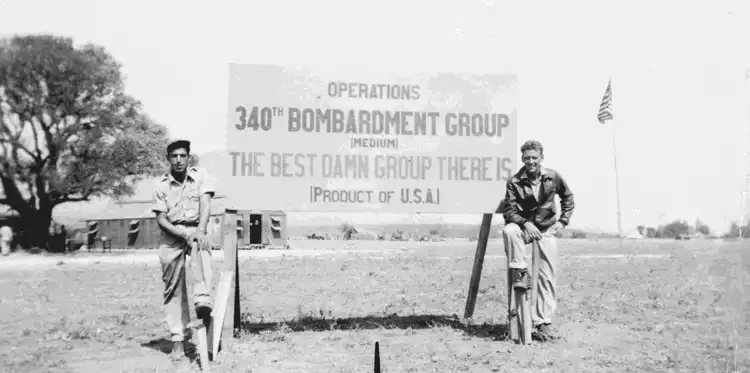
The photo above from Dana Craig of the 486th Squadron shows Lt. Johnny Moyer and his copilot by the main sign for the 340th Bombardment Group based at Alesan, Corsica from approximately April 1944 to April 1945.
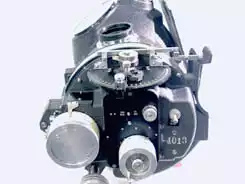
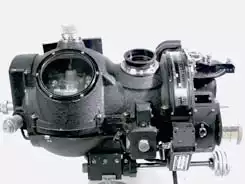
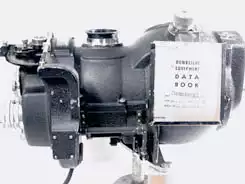

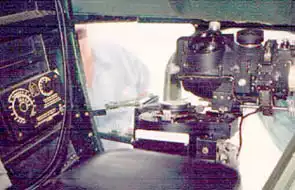

The B-25J Mitchells of the 489th were equipped with the Norden bombsight,a technological advance invented by a Dutch immigrant named Carl Norden. This device made bombing so accurate at the time that it was classified as 'top secret' and the bombardiers were required to swear a Bombardier's Oath, to prevent it from falling into enemy hands. "From the initial point until you dropped the bombs about two minutes later, the bombardier flew the airplane by twisting the knobs on the bombsight. There was no evasive action so you were a sitting duck. The bombsight dropped the bombs at the right instant. Then the radioman checked to make sure the bombs had cleared the bomb bay and when he said "bomb bay clear," the lead pilot was free to maneuver his box out of the flak - usually by a sweeping turn including a change in altitude. When you figure the six planes were as close as they could get them it is a wonder we did not have more collisions. The 340th did have at least one noteworthy collision." The photo above on the lower right shows bombs falling toward the target (top of picture) after being released from a 489th B-25 on an actual mission.
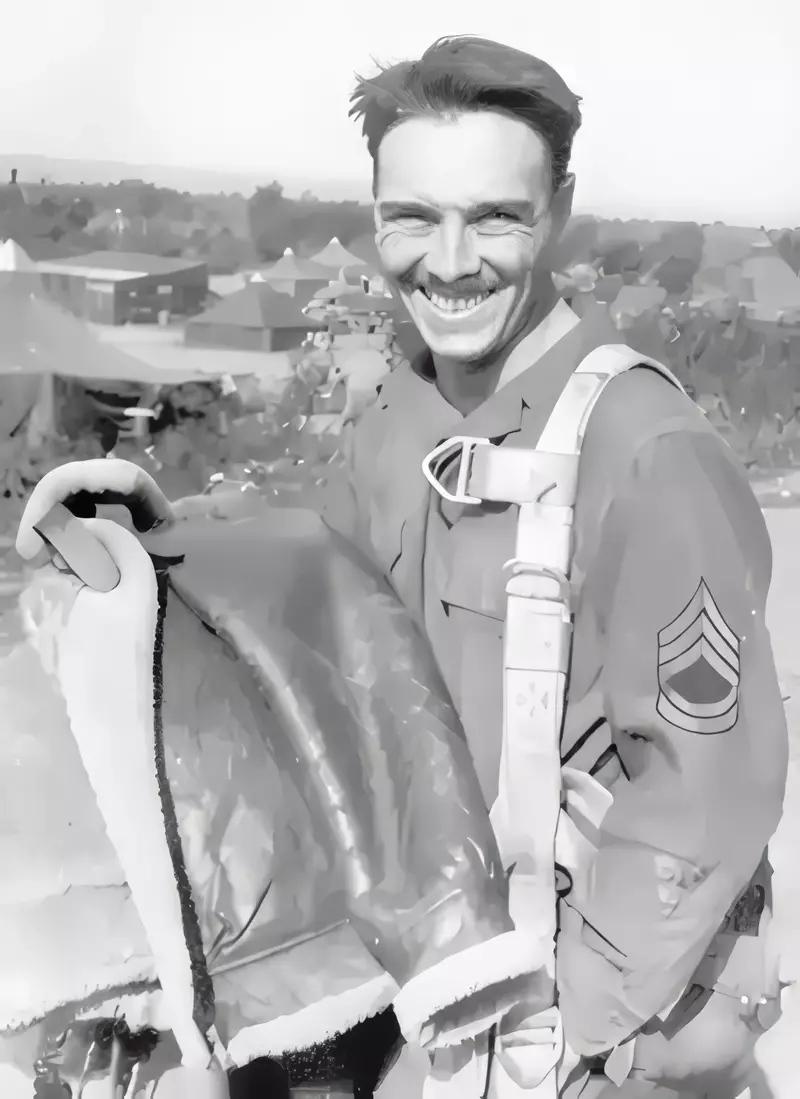
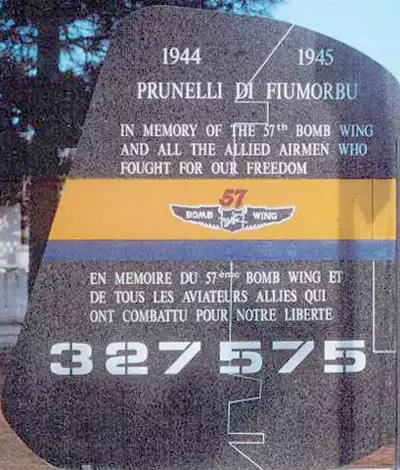
My father, Quentin C. Kaiser, titled this picture Going Home. He seems pretty happy to be going home after 65 missions with the 489th Bombardment Squadron. The Memorial Slab at Ghisonaccia-Gare Airfield, Corsica is dedicated to the airmen of the 57th Bomb Wing.
If you have any comments or suggestions please email me